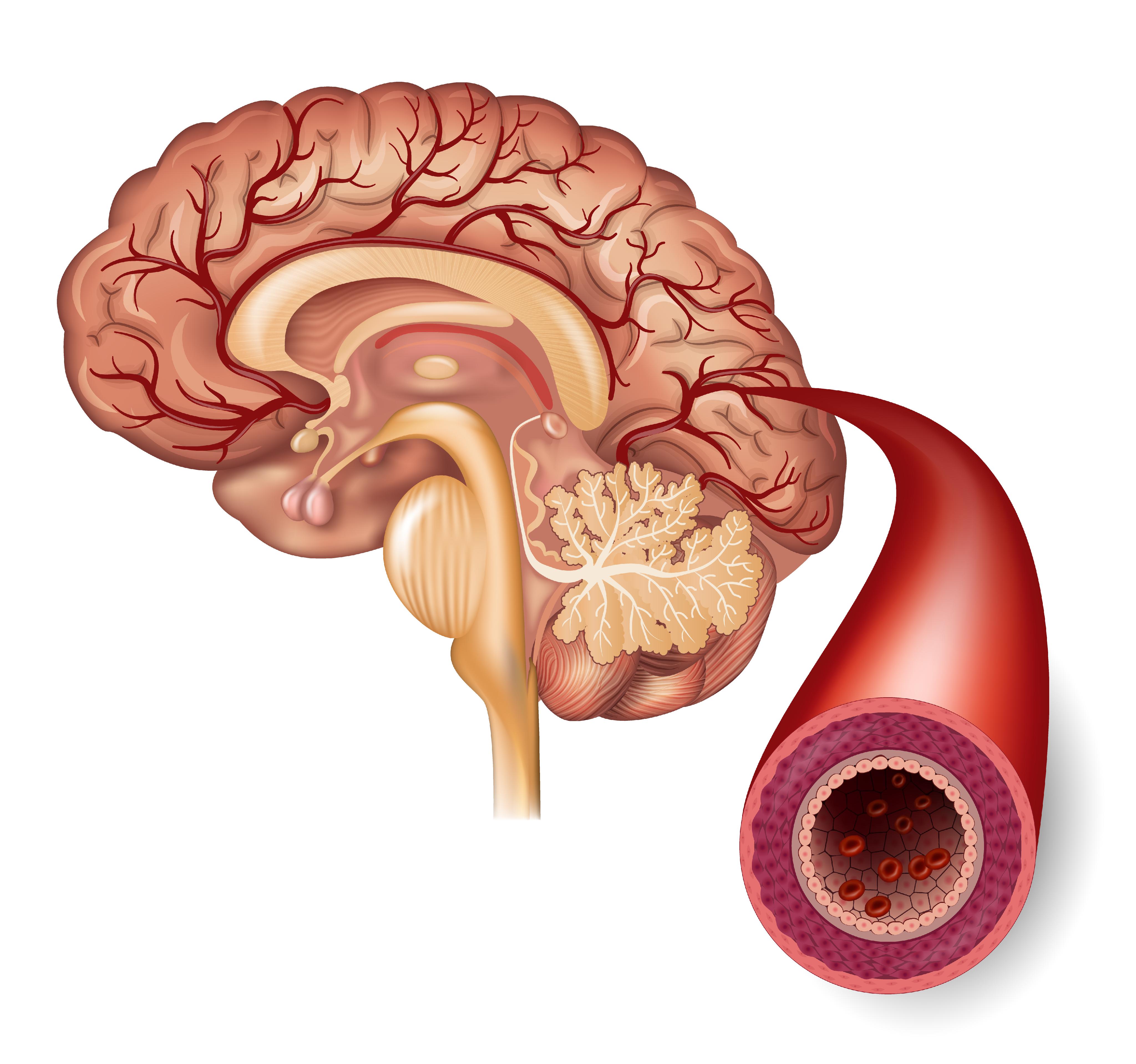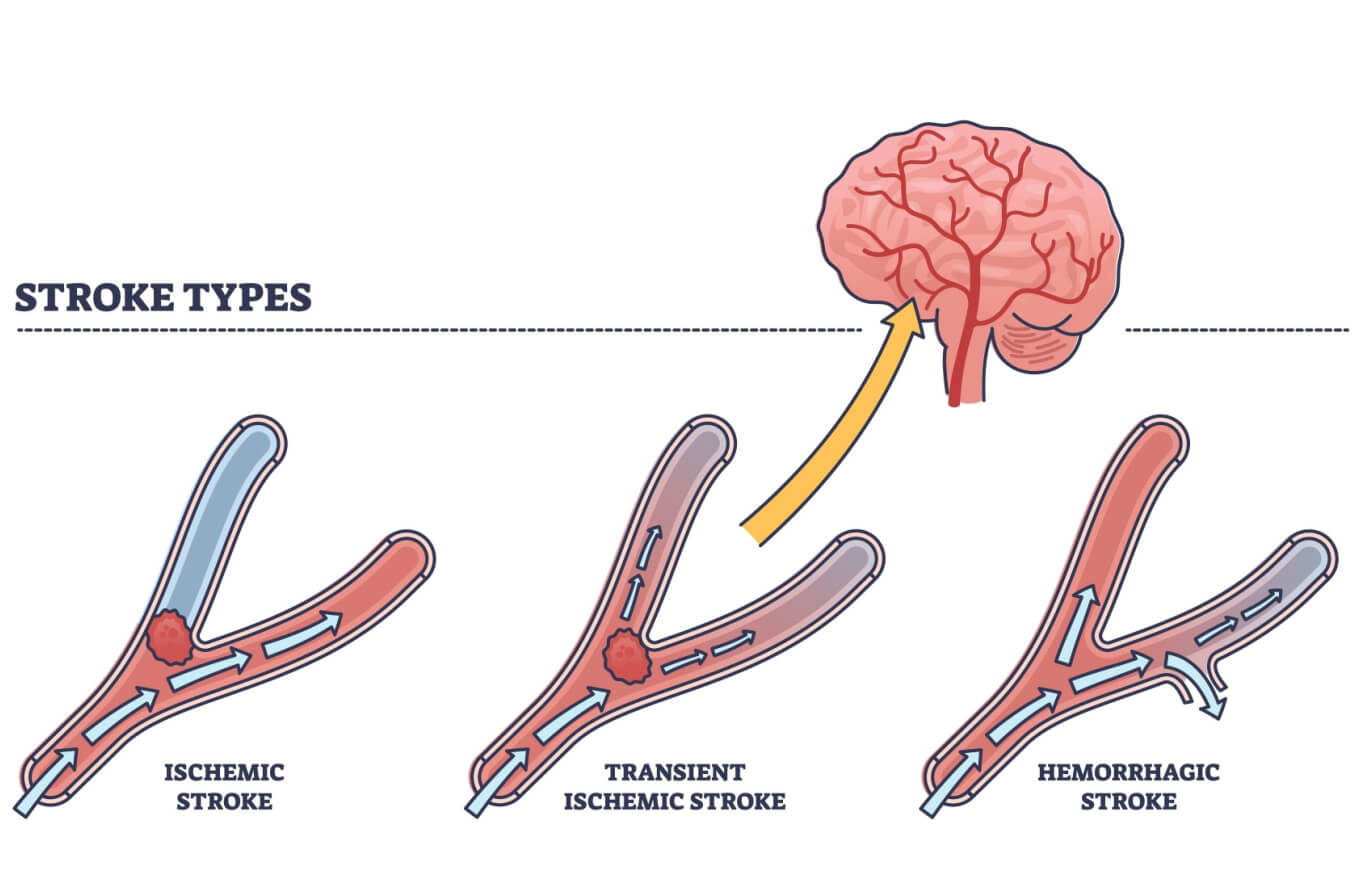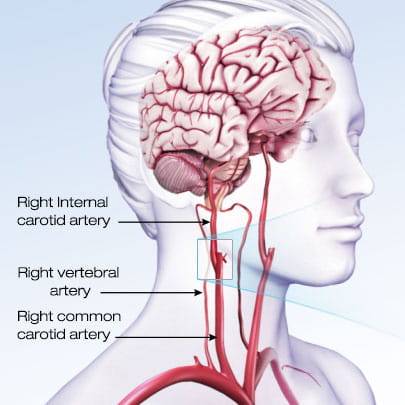Tia Becca Erome - Short Interruptions In Brain Flow
When we talk about certain health moments, it's pretty normal to feel a bit unsure or even quite worried. You might hear terms that sound a little formal, like 'transient ischemic attack,' and wonder what they truly mean for you or someone you care about. So, in a way, let's just say we're going to talk about those brief, unexpected changes in how blood moves to your brain. This kind of event, often called a TIA, is something that, like, can happen without much warning, and it's really important to get a good handle on what it is and why it matters.
You see, these temporary shifts in blood flow are, in some respects, like a quick flicker of a light. They cause symptoms that might make you think of something more serious, perhaps a stroke, but they typically don't last very long at all. It's just a momentary pause in the usual flow, and then things often go back to how they were. This brief interruption is often caused by something temporarily getting in the way of blood reaching a part of the brain. It's a quick event, yet it carries a message that's worth paying attention to.
Knowing about these brief moments can actually make a big difference. It's about being aware, so you can act if you or someone else experiences them. We'll talk about what these moments feel like, why they happen, and what steps you can take to understand them better. It's all about making sense of something that could be a little confusing, and putting it into words that feel more like a friendly chat than a complicated medical report. We want to help you feel more at ease with this topic, and give you some clear ideas about what to do.
What Is a TIA, Really?
How Does a TIA Happen?
Why Is a TIA Such a Big Deal?
Getting a Quick Check for a Tia
Where Can a Tia Show Up?
What Can Help After a Tia?
Finding Support with a Tia
Thinking About the Future with a Tia
What Is a TIA, Really?
A transient ischemic attack, often simply called a TIA, is, you know, a very short period where someone might experience signs that look a lot like those of a stroke. It's important to remember that it's just a short spell, not a full-blown stroke, but the feelings and what you see can be quite similar. This temporary event means that for a brief moment, a part of the brain isn't getting enough blood. It's like when a water hose gets a quick kink in it, and the water stops flowing for just a moment before it straightens out again. The brain really needs a steady flow of blood to work properly, so even a tiny interruption can cause some noticeable changes. These changes, they don't last long, but they are certainly something to pay attention to. It's a temporary kind of situation, typically, and that's a key part of what makes it different from a stroke. The body, it tends to be, pretty good at sorting things out quickly in these instances, getting that blood moving again before any lasting harm comes about. So, while the symptoms might be a bit alarming at the time, the temporary nature is what really sets a TIA apart.
How Does a TIA Happen?
Well, a TIA basically happens because of a brief stop in the flow of blood to your brain. It's not a long-term problem, just a temporary one. Imagine, if you will, a tiny road block in one of the pathways that carries blood up to your brain. This blockage, it's just there for a little bit, and then it clears itself up. When that blood flow is interrupted, even for a short time, the brain cells in that area don't get the oxygen and nutrients they need. That's when you start to see the temporary signs. It's not usually a complete shutdown, just a brief slowing or stopping. This can be caused by something like a small clot that forms somewhere else in the body and then travels up to the brain, but then it breaks apart or moves on quickly. So, you know, it's a very quick process from start to finish. The brain, it's pretty sensitive to any changes in its blood supply, so even a brief dip can cause a reaction. It's a bit like when you momentarily lose your internet connection; things pause, but then they usually pick right back up. That temporary nature is really what defines a TIA, and it's why it typically doesn't lead to lasting issues.
- 124 Squid Game Death
- Iran And Pakistan Map
- Aishah Sofey New Leaked
- What Was Lol Superman
- Exploring Malachi Bartons Relationships The Young Stars Personal Connections
Why Is a TIA Such a Big Deal?
You might be thinking, if a TIA doesn't cause any lasting damage, then why is it something we need to talk about? Well, the thing is, even though a TIA itself might not leave any permanent marks, it's often a very clear warning sign. It's like a little alarm bell going off, telling you that there might be something going on with your blood vessels that needs a closer look. Approximately one in three people who experience a TIA will, at some point, have a stroke. That's a pretty significant number, isn't it? So, while the TIA itself is temporary, it's a signal that your body is sending you, asking you to pay attention. It's a chance to understand what might be happening and to take steps to prevent something more serious from occurring later on. Basically, it's a heads-up, giving you time to talk with your healthcare team and figure out a plan. Ignoring a TIA is, in a way, like ignoring a smoke detector that's chirping; it might not mean there's a fire right now, but it's telling you to check things out.
Getting a Quick Check for a Tia
If you or someone you know experiences signs that seem like a TIA, getting a quick check-up is, honestly, super important. A prompt evaluation of those signs is vital for figuring out what might be causing a transient ischemic attack. It's about getting answers fast. This quick look by a healthcare professional helps them understand what happened and, just as importantly, helps them figure out the best way to move forward. They need to understand the root cause of that brief blockage so they can suggest the right kind of care. You see, the sooner they can get to the bottom of it, the better. It allows them to put together a plan that is right for you, making sure you get the support you need. It's not about panicking, but about being proactive. Taking that quick step to get checked out can really make a difference in how things play out. It's about being on top of things, rather than waiting to see what happens next. So, if those temporary signs pop up, reaching out for a medical opinion quickly is, like, the very first thing to do.
Where Can a Tia Show Up?
A TIA is a temporary shortage of blood flow, and while we often think about the brain, it can actually happen in a few different places. It's not just about the brain itself. Sometimes, this temporary blockage of blood flow can affect a part of the spinal cord. And then, there's also the thin layer of tissue at the very back of the eye, which is called the retina. So, you know, the signs of a TIA can show up in ways that relate to these different areas. For example, if it's the retina, you might experience a temporary loss of vision in one eye. If it's the brain, you could have temporary weakness on one side of your body, or difficulty speaking. The exact signs really depend on which part of the body is briefly affected by that reduced blood flow. It's all connected to where that temporary interruption happens. Knowing that it's not just brain-focused can help you be more aware of the different ways a TIA might present itself. It's a broader picture than some people might initially think, and that's, like, pretty important to keep in mind.
What Can Help After a Tia?
Once a TIA has been identified, there are, you know, several paths your healthcare team might suggest to help manage things moving forward. If the cause of the TIA is narrowed blood vessels in the head, for example, there are specific approaches that might be recommended. When there's a significant blockage in a larger artery, a doctor might suggest certain medicines, like aspirin or clopidogrel. Sometimes, they might even add another medicine called cilostazol to the mix, especially if those larger arteries are quite blocked. Beyond specific medications, managing conditions like carotid artery disease, which can be a cause of TIAs, often involves some broader lifestyle adjustments. This could mean changes to what you eat, how active you are, or managing things like blood pressure. Medicines are often a key part of the plan, but sometimes, in certain situations, a doctor might even talk about surgery as an option. It's all about finding the right combination of things to help keep your blood flow moving smoothly and reduce the chance of future issues. Each person is a little different, so the approach is usually quite personalized.
Finding Support with a Tia
Living with a transient ischemic attack, or TIA, can, in a way, bring up a lot of questions and maybe even some worries. It's completely normal to feel that way. That's why connecting with others who have gone through similar experiences can be incredibly helpful. You know, places like Mayo Clinic Connect offer patient communities where you can link up with people just like you. It's a spot where you can find support and get answers to your questions from folks who truly get it. There are also specific support groups, like those for stroke and cerebrovascular diseases, where you can share your story, listen to others, and learn from their journeys. It's a space where you can feel understood and not so alone. Sometimes, just knowing that someone else understands what you're going through can make a world of difference. These communities and groups are, basically, places where you can swap tips, get encouragement, and feel a sense of belonging. It's about building connections and finding strength in shared experiences, which is pretty valuable, really.
Thinking About the Future with a Tia
When you've had a TIA, it's natural to think about what the future might hold. As we've talked about, a TIA can be a warning sign, and about one in three people who have one will, at some point, experience a stroke. This statistic isn't meant to scare you, but rather to highlight the importance of taking the TIA seriously and working with your healthcare team. It's about being proactive and taking steps to reduce any future risks. This might involve keeping up with lifestyle changes, making sure you take any prescribed medicines regularly, and having regular check-ups. Your medical professional might also discuss other ways to help keep your blood vessels healthy. It's a continuous conversation and a partnership between you and your care providers. The goal is to help you live as well as possible and to keep your brain and body healthy for the long run. So, it's about staying informed, staying connected with your support system, and feeling empowered to take an active role in your own well-being. It's a path forward, really, with steps you can take to manage things.



Detail Author:
- Name : Mr. Deven Krajcik
- Username : annette.weissnat
- Email : armani.farrell@hotmail.com
- Birthdate : 1982-02-09
- Address : 25566 Hauck Light New Joannie, MT 03014-2255
- Phone : 347-568-5523
- Company : Cartwright Group
- Job : Protective Service Worker
- Bio : Magni et necessitatibus praesentium voluptas. Ad laboriosam et aut. Aspernatur autem atque numquam asperiores.
Socials
facebook:
- url : https://facebook.com/reynoldsd
- username : reynoldsd
- bio : Excepturi ut nam voluptatibus voluptatem autem impedit vel.
- followers : 998
- following : 2625
instagram:
- url : https://instagram.com/dallin_reynolds
- username : dallin_reynolds
- bio : Ut laudantium ullam sunt ut nostrum. Qui minus nam repellendus natus.
- followers : 2815
- following : 1444
tiktok:
- url : https://tiktok.com/@reynoldsd
- username : reynoldsd
- bio : In sit suscipit reprehenderit dignissimos.
- followers : 3729
- following : 2400
linkedin:
- url : https://linkedin.com/in/dallin.reynolds
- username : dallin.reynolds
- bio : Neque incidunt laborum et eligendi nihil.
- followers : 1440
- following : 49
twitter:
- url : https://twitter.com/reynoldsd
- username : reynoldsd
- bio : Recusandae non maiores quis similique. Iusto ut voluptatum et sed. Eum ullam asperiores repudiandae deleniti ratione. Odio numquam totam voluptate velit.
- followers : 3170
- following : 2254